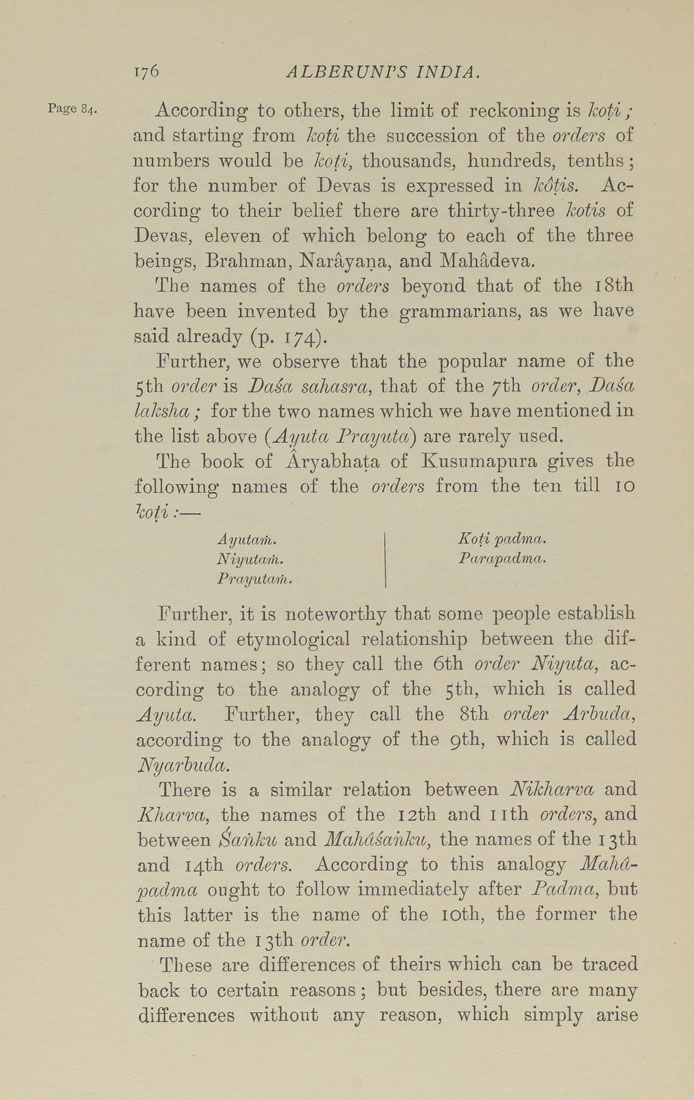Bīrūnī, Muḥammad ibn Aḥmad, Alberuni's India (v. 1)
(London : Kegan Paul, Trench, Trübner & Co., 1910.)
|
||
|
|
|
|
| Page 176 |

176 ALBERUNPS INDIA. Page 84. According to others, the limit of reckoning is koti ; and starting from koti the succession of the orders of numbers would be koti, thousands, hundreds, tenths; for the number of Devas is expressed in kotis. Ac¬ cording to their belief there are thirty-three kotis of Devas, eleven of which belong to each of the three beings. Brahman, Narayana, and Mahadeva. The names of the orders beyond that of the i8th have been invented by the grammarians, as we have said already (p. 174). Further, we observe that the popular name of the 5 th order is Dasa sahasra, that of the 7th order, Dasa laksha; for the two names which we have mentioned in the list above (Ayuta Br ayuta) are rarely used. The book of Aryabhata of Kusumapura gives the following names of the orders from the ten till 10 koti :— Ayutarh. Niyutam. Pr ayutarh. Koti padma. Parapadma. Further, it is noteworthy that some people establish a kind of etymological relationship between the dif¬ ferent names; so they call the 6th order Niyuta, ac¬ cording to the analogy of the 5th, which is called Ayuta. Further, they call the 8th order Arbuda, according to the analogy of the 9th, which is called Nyarhuda. There is a similar relation between Nikharva and Kliarva, the names of the 12th and nth orders, and between Sanku and Mahctsaiiku, the names of the 13th and 14th orders. According to this analogy Mahd¬ padma ought to follow immediately after Padma, but this latter is the name of the loth, the former the name of the 13th order. These are differences of theirs which can be traced back to certain reasons; but besides, there are many differences without any reason, which simply arise |
| Page 176 |







